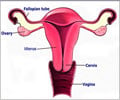Researchers analyzing Kansas and Nebraska census data have found that rural communities project a skewed gender ratio.

Those findings suggest leaders should consider the needs of young women in their economic and community development plans, said Robert Shepard, a University of Nebraska-Lincoln doctoral candidate who conducted the peer-reviewed research. His study results were published in April's Great Plains Research journal.
"The whole point of this study was to look at it quantitatively, to see if the numbers bear out this story of younger people leaving and not coming back," he said. "My study was important in helping to substantiate that this is a problem associated with gender."
Examining census data from 2000 and 2010, Shepard found that more than half of 1,627 villages, rural townships, precincts and other locales with 800 or fewer people experienced an increased ratio of young men to young women.
The median increase was just under 7 percent, but many of the smallest communities saw extreme increases – in excess of 200 percent -- in the proportion of males to females.
Shepard said he wanted to learn whether young women were staying in rural areas or returning home after college at the same rates as young men.
He found no previous research that evaluated migration patterns of his target group, young adults who would be starting families. Public U.S. Census data doesn't reveal the whereabouts of living individuals, making difficult to track such patterns.
He chose those age ranges to establish a roughly high-school-aged population cohort in 2000 and to take a second look at it in 2010 – a time span allowing for completion of college and establishing a household.
Shepherd found a growing proportion of young women in urban areas during the post-college years. Major cities and suburbs, including Omaha and Kansas City, Kan., had nearly equal ratios of males and females in the 22-to-27 age group. In several others, including Topeka, Kan., and Scottsbluff, Neb., women outnumbered men in their age group.
College may be a significant reason why many young women leave rural communities, Shepard said. As of 2000, women comprised 56 percent of 25- to 29-year-olds with at least four years of higher education. Social and economic reasons often prevent college graduates from returning home – they may have formed bonds with new people or the rural job market may be unfavorable.
Shepard said more research is needed to investigate why young women migrate away from rural areas. In previous studies exploring women's attitudes toward the rural Great Plains, some women reported limited job opportunities, while others described a patriarchal culture in some rural communities. No previous research explicitly addressed how rural population change relates to gender, he said.
When he plotted sex ratio changes from 2000 to 2010 on a map, Shepard said he was surprised to find more of a patchwork than a clear urban-rural pattern. Some places that saw significant increases in the proportion of males bordered places that saw equally significant increases in the number of women. He called for more research into why some areas seem more attractive to women than others.
Another surprise was that in some communities, young men left in greater numbers than young women – but the ratio of males to females still increased. That's because the number of women in that community already was small. Blaine township in Clay County, Kan., for example, lost 11 of 19 males and 9 of 11 females from 2000 to 2010. Its ratio of males to females in the cohort changed from less than two men for every woman to four men for every woman.
"The big implication here is that if these ratios don't trend back toward equilibrium, there is some concern about the long-term population stability of those areas," he said.
Source-Eurekalert
 MEDINDIA
MEDINDIA




 Email
Email




